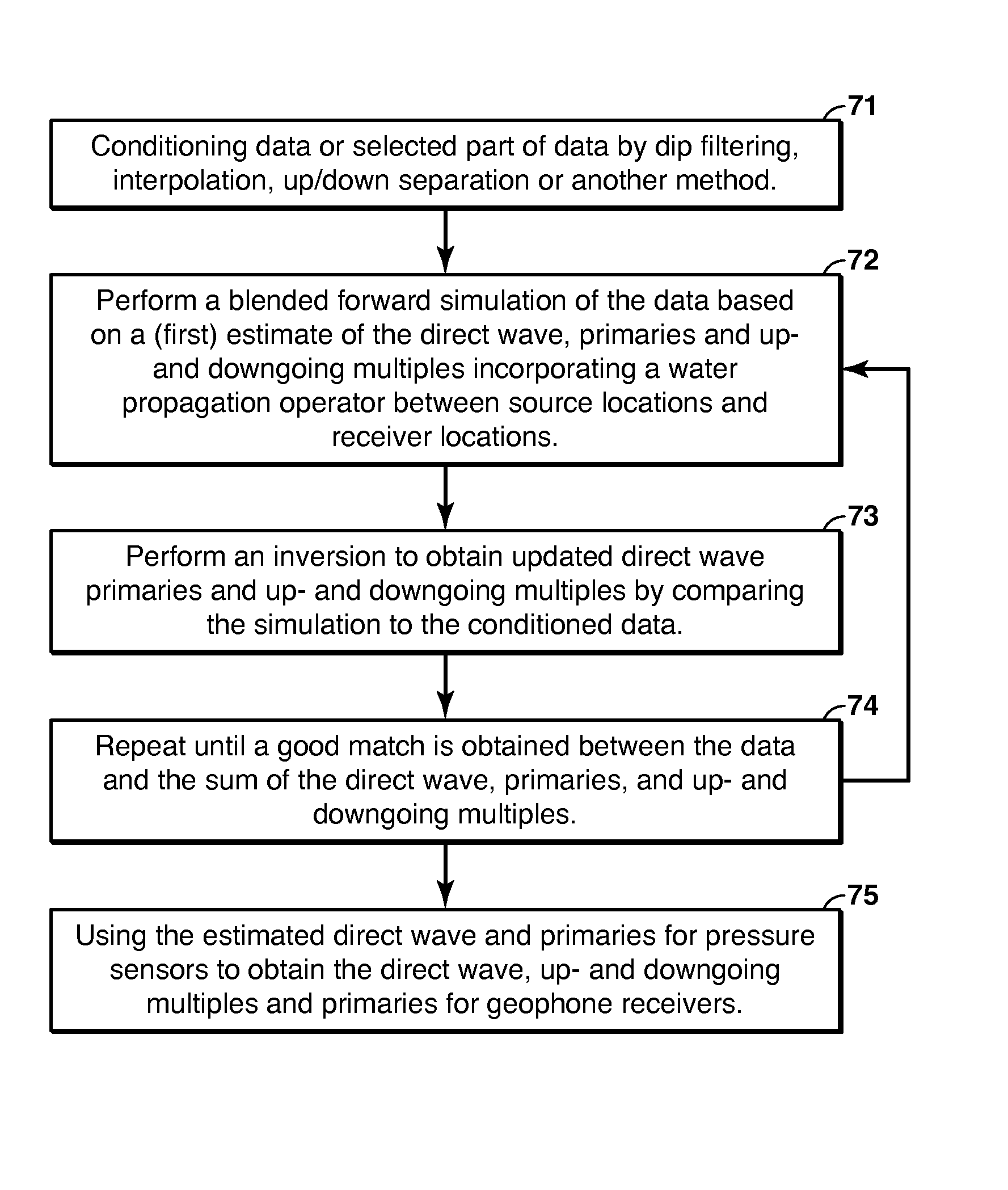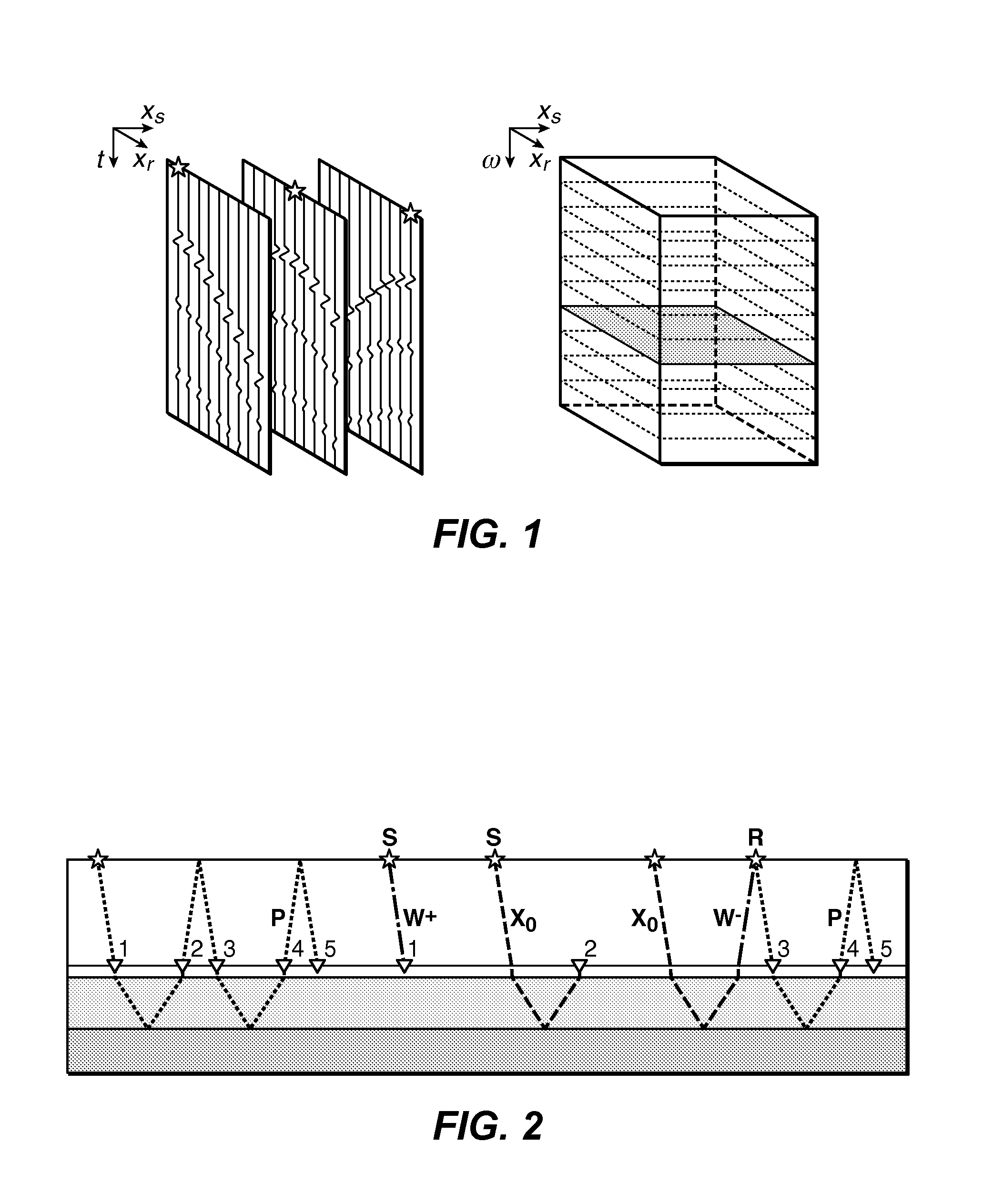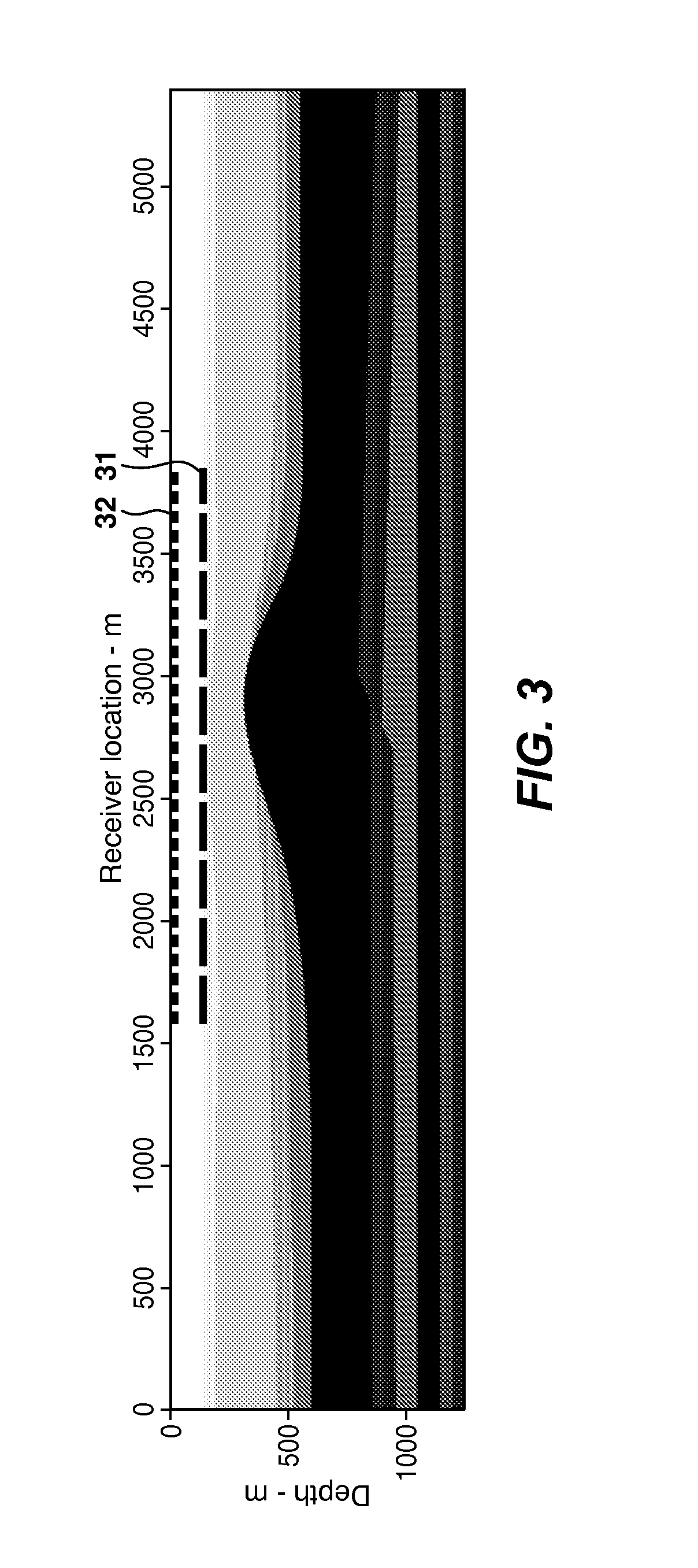Primary estimation on obc data and deep tow streamer data
a technology of obc data and streamer data, applied in seismology, instruments, seismic data for water-covered areas, etc., can solve the problems of difficult removal of direct wave, difficult removal of receiver ghosts, etc., and achieve the effect of saving computational costs and improving the stability of inversion
- Summary
- Abstract
- Description
- Claims
- Application Information
AI Technical Summary
Benefits of technology
Problems solved by technology
Method used
Image
Examples
example
[0084]A split-spread marine acquisition was simulated with the aid of the subsurface model shown in FIG. 3. The model contains a high velocity salt layer. The 150 shots and 150 receivers are located between x=1575 m and x=3810 m. Note that, for this example, both sources and receivers are located at the surface.
[0085]A shot gather from the dataset is shown in FIG. 12A. It can be seen in FIG. 12A that the wavefield coming from the source has been recorded by the receivers after (multiple) reflections at the reflectors in the subsurface, as parabolic-like curves. These parabolic-like curves are a function of source-receiver spacing (called offset) in the horizontal direction, and travel time of the seismic wave in the vertical direction. It is the task of seismic processing to turn these measurements into an image of the subsurface.
[0086]The EPSI algorithm, using the optimization as described above with the objective function in Equation 17, was applied to the data to estimate X0 and ...
PUM
 Login to View More
Login to View More Abstract
Description
Claims
Application Information
 Login to View More
Login to View More - R&D
- Intellectual Property
- Life Sciences
- Materials
- Tech Scout
- Unparalleled Data Quality
- Higher Quality Content
- 60% Fewer Hallucinations
Browse by: Latest US Patents, China's latest patents, Technical Efficacy Thesaurus, Application Domain, Technology Topic, Popular Technical Reports.
© 2025 PatSnap. All rights reserved.Legal|Privacy policy|Modern Slavery Act Transparency Statement|Sitemap|About US| Contact US: help@patsnap.com



